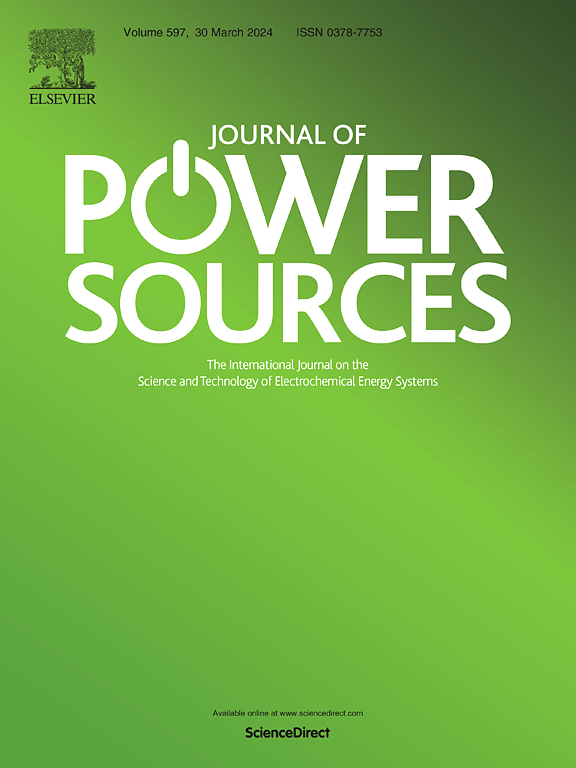TiO2/BiVO4 dual photoanodes: Extending light harvesting and addressing band edge misalignment for photoelectrochemical water splitting
IF 8.1
2区 工程技术
Q1 CHEMISTRY, PHYSICAL
引用次数: 0
Abstract
Combining two photocatalysts to form heterojunctions is a common strategy to enhance the photoelectrochemical (PEC) performance in water splitting. However, this approach requires suitable band alignment between the two photocatalysts, which limits its effectiveness or even deteriorate the performance, as seen with mismatched type I heterojunctions. In this work, we design a dual photoanode configuration overcoming the unfavorable type I band alignment commonly formed in TiO2/BiVO4 heterojunctions. Using pulsed laser deposition (PLD), we optimized the deposition parameters to independently maximize photocurrent generation in transparent TiO2 and BiVO4 films, deposited separately on FTO substrates. The two photoanodes were then connected and positioned back-to-back, with the TiO2 photoanode facing the light source and the BiVO4 photoanode illuminated by light passing through the TiO2 layer. The TiO2/BiVO4 dual photoanode generates a photocurrent of 1.72 mA/cm2 at 1.3 V vs. RHE, 2.3 times higher than that of TiO2/BiVO4 heterojunction. Similarly, PEC hydrogen production increased to 14.2 μmol cm−2 h−1, which is 2.25 times higher than BiVO4 alone and 2.9 times greater than TiO2/BiVO4 heterojunction. This improvement is attributed to the extended light absorption and larger active surface area provided by the dual photoanode, while avoiding the charge carrier recombination typically associated with type I heterojunction interfaces.

求助全文
约1分钟内获得全文
求助全文
来源期刊

Journal of Power Sources
工程技术-电化学
CiteScore
16.40
自引率
6.50%
发文量
1249
审稿时长
36 days
期刊介绍:
The Journal of Power Sources is a publication catering to researchers and technologists interested in various aspects of the science, technology, and applications of electrochemical power sources. It covers original research and reviews on primary and secondary batteries, fuel cells, supercapacitors, and photo-electrochemical cells.
Topics considered include the research, development and applications of nanomaterials and novel componentry for these devices. Examples of applications of these electrochemical power sources include:
• Portable electronics
• Electric and Hybrid Electric Vehicles
• Uninterruptible Power Supply (UPS) systems
• Storage of renewable energy
• Satellites and deep space probes
• Boats and ships, drones and aircrafts
• Wearable energy storage systems
 求助内容:
求助内容: 应助结果提醒方式:
应助结果提醒方式:


